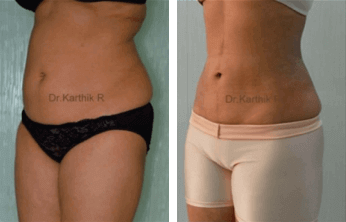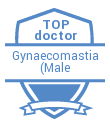Happy New Ear
A beautiful face always attracts compliments. “Almond shaped eyes”, “An aquiline nose” or “Bee stung lips” are among the frequently heard ones but you can barely hear someone say, “What proportionate ears!” When assessing the face, the external ear is hardly given much importance when compared to its other facial feature cousins such as eyes, nose and lips. However while perfectly proportionate ears blend in naturally with a person’s profile, prominent or deformed ears stand out and attract a lot of negative attention. Those who have ears that ‘stick out’ know the disharmony and unhappiness this causes.It is a combination of multiple meticulous techniques wherein execution differs in each patient.
Aesthetic Parameters
There is wide variability between the normal and the abnormal ear; it is literally a question of angle and shape of individual parts in the auricle. The normal external ear is separated from the side of the head by 2 cm and forms an angle of less than 25 degrees. Beyond these approximate normal limits, the ear will appear prominent when viewed from either the front or back. The helical rim should project symmetrically about 10 to 12 mm from the scalp at the uppermost part of the auricle. Ideally, the upper third of the helix should be visible on frontal view, 2-5mm laterally behind the antihelical and also the helix should follow a smooth curve. The conchal depth and the ear lobule are also important for symmetry of the auricle.
Auricular Deformities
Prominent ear is the most common auricular deformity affecting approximately 5% of the population. In fact, it is considered the most common congenital deformity of the head and neck. The three most common causes for prominent ear are: underdeveloped anti-helical fold, prominent concha and protruding ear lobule. The most frequently noted abnormality is a relatively underdeveloped antihelix, especially underdeveloped at the upper pole along the superior crus. This leads to flattening, lengthening and asymmetry. The second most observed deformity is conchal deformity (normally the tragus-antitragus complex should project laterally about 1 cm from the depth of the conchal bowl). A less common abnormality is the underdevelopment of crura, commonly inferior crus of anti- helix. Another infrequent deformity is a deficient helial roll and protrusion of ear lobule.
Macrotia, lop ear, cup ear, stahl ear, cryptotia, shell ear, Machiavellian ear, elfin ear, bat ear and flop ear also appear in the list of uncommon deformities of external ear.

What is Otoplasty?
It denotes surgical and non-surgical techniques for correcting deformities or defects of the auricle (external ear). It is performed on patients who are dissatisfied with the natural shape of the ears or when an injury has deformed the normal shape. Otoplasty is done more commonly on children and rarely on neglected adults. This surgery does not alter hearing ability as it involves only the external ear.
Success rate depends on proper planning and execution of surgery. There is no specific surgical technique for otoplasty.

Surgical Correction
The goal of otoplasty is to set back the ears in such a way that the angle is normal, the contour appears soft and symmetry between both ears is maintained without any telltale signs of surgery.
The correction of protruding ears uses surgical techniques to create or increase the antihelical fold by antihelical fold manipulations and to reduce enlarged conchal cartilage by conchal alteration. Antihelical fold is manipulated by suturing techniques, incisions, anterior controlled abrasions or a combination of them.
Conchal alteration is done by suturing and excision techniques. Incisions are generally made on the back side of ear where it can be hidden well. If incisions are necessary in the front of the ear, they are made within the folds to hide them. Patients prone to scarring problems such as keloidal tendencies are advised about the possible complications arising out of surgery.
A child with protruding ears is physically strong enough to undergo surgery at 10 years of age. There is no rigid rule about when the surgery should be performed but 4 years is seen as a reasonable age.
Surgery is done commonly under general anaesthesia and rarely under local anaesthesia. It is done as a day care procedure, but young patients and patients who are not cooperative enough may need three days’ admission. In some deformities with ear cartilage deficiencies, the cartilage has to be supplemented from the rib or the normal ear on the opposite side. This cartilage has to be sculpted to the required shape based on the template designed from the normal ear pre-operatively; if both ears are affected, then the template is taken from a normal ear of someone from the same age group as the patient. This cartilage harvest does not cause any deformities in the patient. In the postoperative period, a bulky non compressive dressing is placed for three days and a loose headband is worn for 6 weeks.
Complications in otoplasty are not very common. Haematoma, infection and suture dehiscence are rare; one complication that may arise is asymmetry when compared to opposite ear.
Dr.Venkat Kiran
Cosmetic Surgeon












